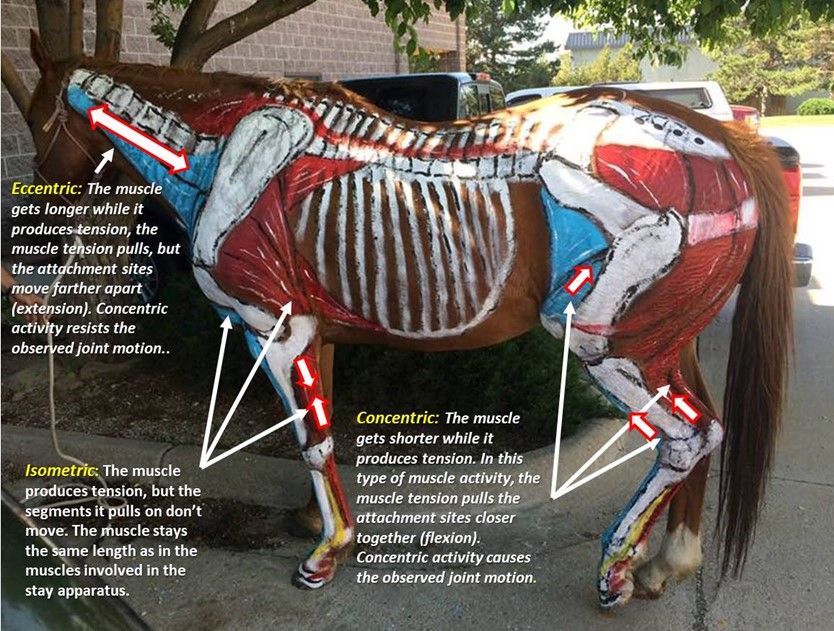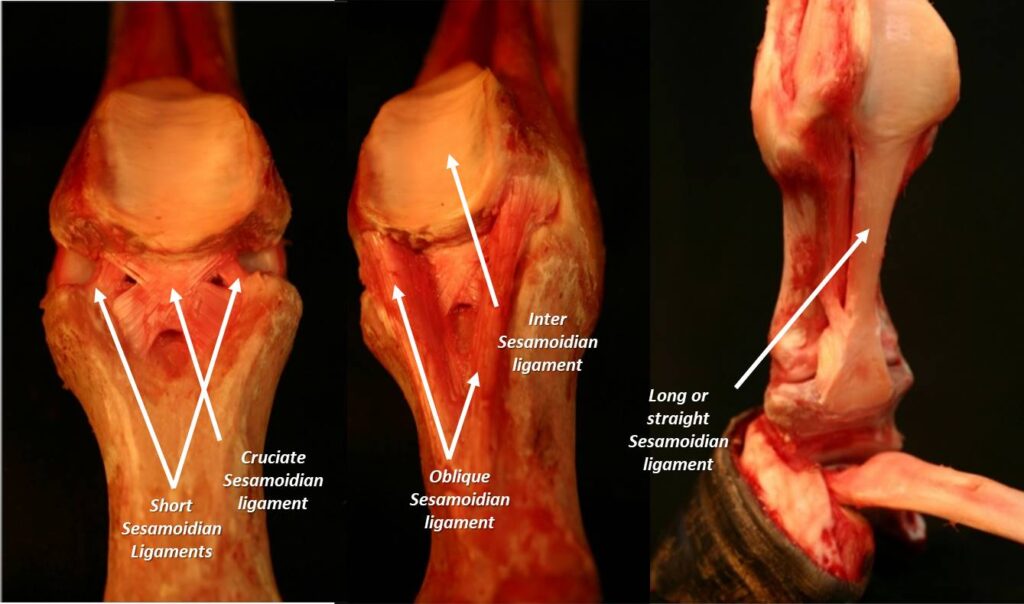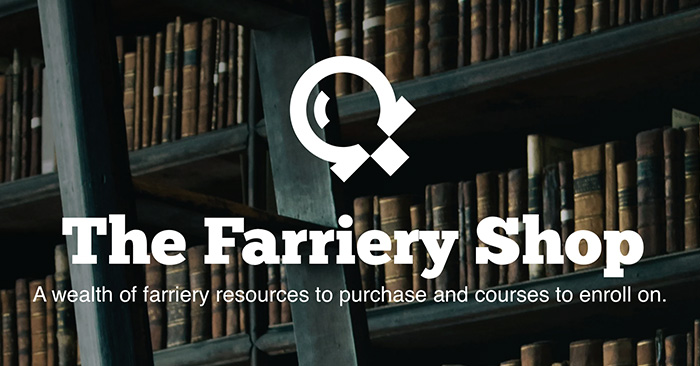Muscles
Muscle is a specialized tissue with the unique capability to produce force. As previously stated muscle comes in different forms throughout the body:
1) Cardiac muscle is found in the heart and arteries of the body. They pump blood.
2) Smooth muscle lines the digestive system and pushes food along and out of the body.
3) Skeletal muscle is attached to bones by tendons, and the muscle and tendon act together to start, stop, and control the movement of the segments.
The word muscle is used to refer to an individual identifiable muscle, like your biceps or triceps muscle or your hamstring muscle (a group of three muscles on the back of the hip and hock). The term muscle is also used to refer to the specialized cells found within a given muscle. Muscle cells are called fibres and consist of a long chain of individual tension-producing units called sarcomeres. The sarcomeres contain thin protein filaments called actin and myosin, and the interaction between actin and myosin produces the muscle force, or muscle tension. This force is also known as active tension because it’s created by the interaction of the actin and myosin.
The one most important, and often overlooked, aspect of all muscle is that a muscle can only pull. Muscles can’t push. The pull of a muscle is called muscle tension. Because muscles can only pull, they’re arranged in groups around a joint to produce and control the motion of the segments meeting at a joint. Different muscle groups tend to cause different joint actions, but all muscles produce force by pulling.
There are three types of muscle tension (figure 1):
a) Isometric: The muscle produces tension, but the segments it pulls on don’t move. The muscle stays the same length as in the muscles involved in the stay apparatus.
b) Concentric: The muscle gets shorter while it produces tension. In this type of muscle activity, the muscle tension pulls the attachment sites closer together (flexion). Concentric activity causes the observed joint motion.
c) Eccentric: The muscle gets longer while it produces tension. In this type of muscle activity, the muscle tension pulls, but the attachment sites move farther apart (extension). Concentric activity resists the observed joint motion.

Tendons
Tendons attach bones to muscles. The material making up a tendon is tough and elastic, meaning that it resists tearing, but it can be stretched and then return to its original length. Making use of the elasticity of the tendon is important to effective movement. Using the elasticity of the tendon during movement performance is part of the stretch shorten cycle. The stretch-shorten cycle consists of actively lengthening a muscle (eccentric activity) and then, without any hesitation or delay, actively shortening the same muscle (concentric activity). The stretch-shorten cycle increases the force produced by the muscle because the tension produced is the sum of the active tension from the muscle and the passive tension from the tendon.

Ligaments
A ligament is a specialized connective tissue providing stability to a joint. Most ligaments are part of the joint capsule, located to reinforce the capsule where the joint is most susceptible to dislocation, or coming apart. In spite of its great strength, a ligament can be stretched by loading to the point of injury, called a ligament desmopothy (sprain). Ligament desmopothy are one of the most common injuries related to physical activity. There are different degrees of ligament strain, from Type I (mild) to Type III (severe, because it involves a tear of the ligament). Differences in the degree of ligament desmopothy are why the recovery time from some “desmitis” injury’s is quite short while the recovery time from others are very long, possibly involving surgery and a long, challenging rehabilitation.


